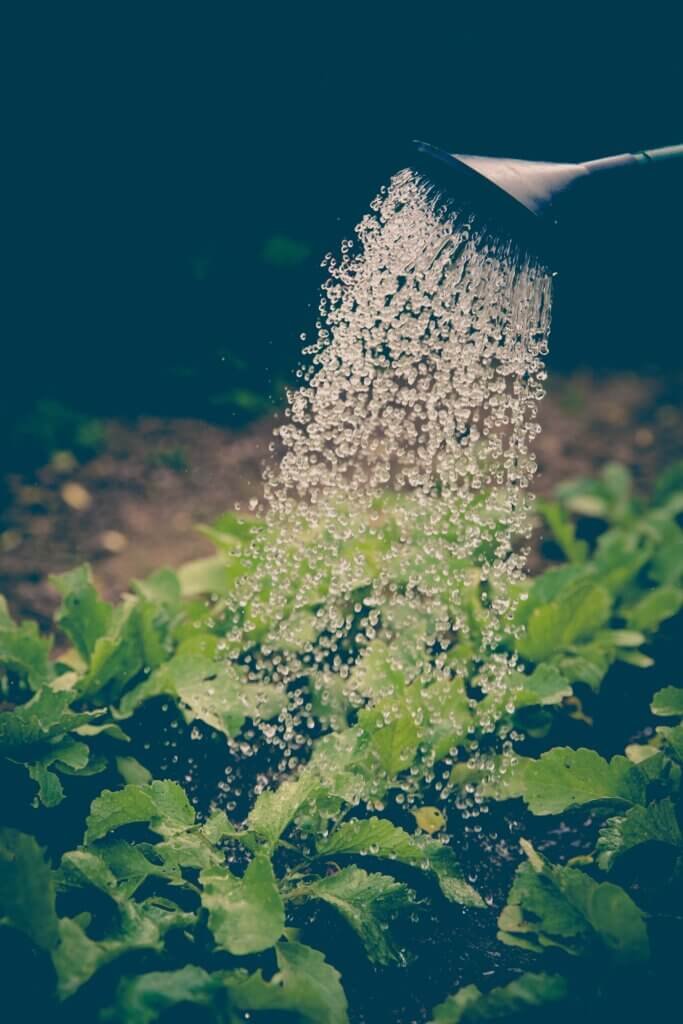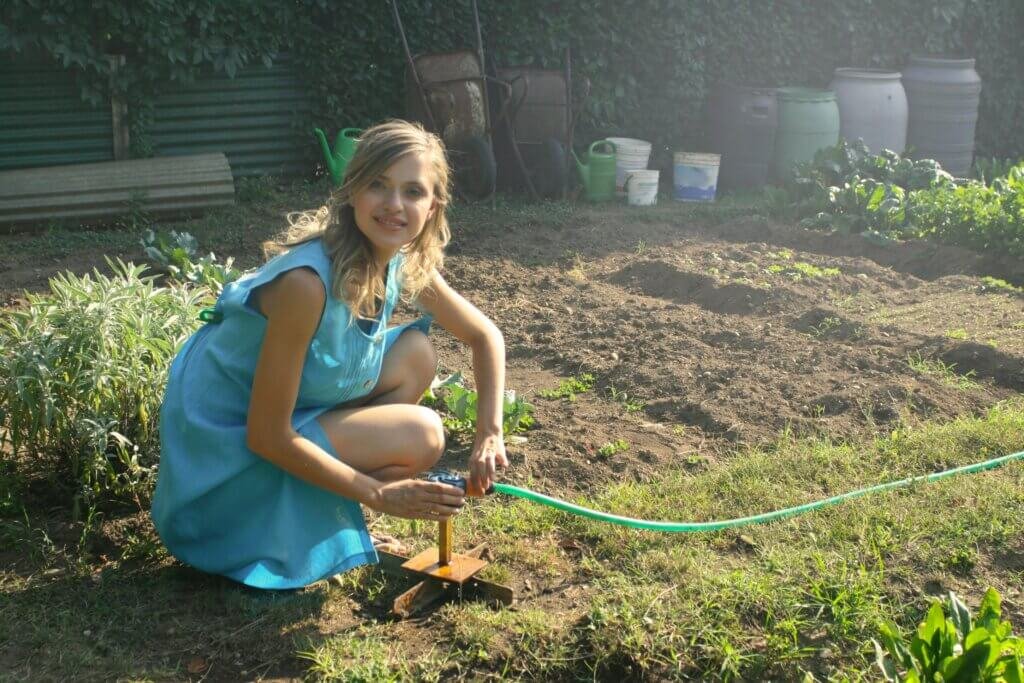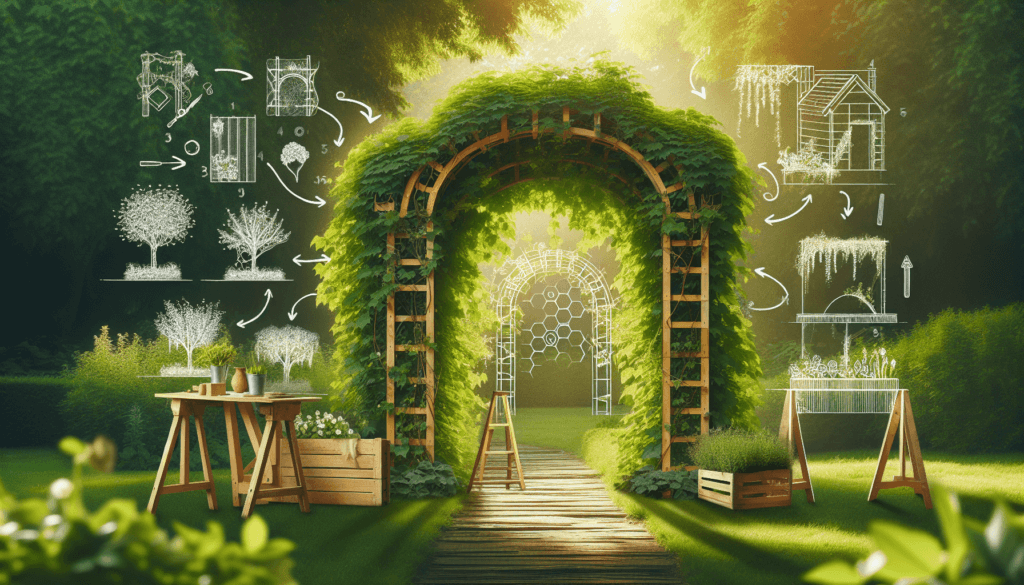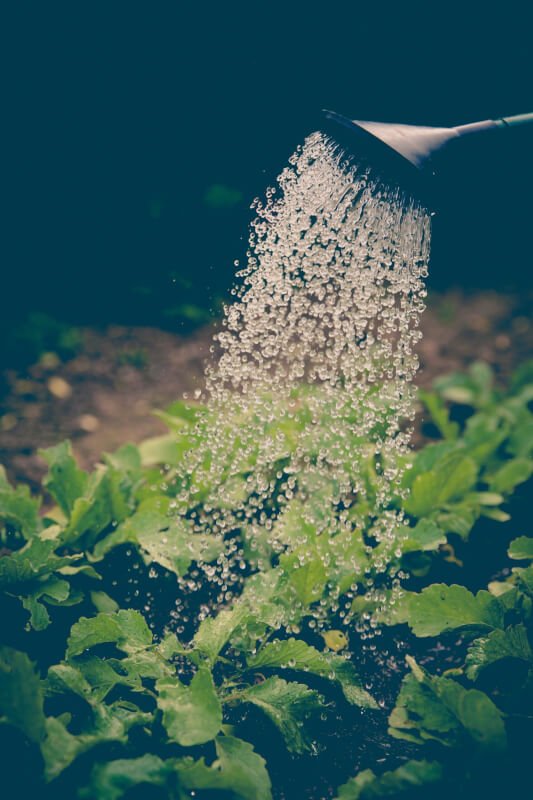Are you looking to add a touch of elegance and charm to your garden? Look no further! Our DIY Guide To Building A Custom Garden Archway is here to help you create a stunning focal point that will transform your outdoor space. Whether you’re a seasoned DIY enthusiast or a beginner, this comprehensive guide provides step-by-step instructions and tips on how to design and construct your very own garden archway. From choosing the perfect materials to adding decorative elements, we’ve got you covered. Get ready to impress your friends and neighbors with your newfound gardening skills as you build a beautiful archway that enhances the beauty of your garden.

Choosing the Right Location
Consider the purpose and function of the archway
When choosing the location for your custom garden archway, it’s important to consider its purpose and function. Are you looking to create a grand entrance to your garden, or do you simply want to add a decorative element? If you’re hoping to create an entrance, consider placing the archway near a pathway or at the entrance of your garden. If you’re looking for a decorative element, you can place the archway against a wall or fence to add visual interest.
Determine the ideal size for your garden archway
The size of your garden archway will depend on various factors such as the dimensions of your garden, the height of the surrounding plants, and the overall aesthetic you are trying to achieve. Measure the width and height of the area where you plan to install the archway to determine the ideal size. Keep in mind that the archway should be proportionate to the size of your garden and not overpower the other elements.
Evaluate the surrounding landscape and plants
Before finalizing the location for your garden archway, take a look at the surrounding landscape and plants. Consider the growth patterns of nearby trees or shrubs to ensure they won’t obstruct the archway in the future. Additionally, take note of any plants or flowers that could potentially enhance the visual appeal of the archway, such as climbing roses or ivy.
Ensure proper sunlight and shade for the archway
Another important factor to consider when choosing the location for your garden archway is the amount of sunlight and shade it will receive. Archways covered in climbing plants will require a good amount of sunlight for the plants to thrive. However, if you’re looking to create a shaded area, consider placing the archway in a spot that receives partial shade. Think about the overall function and aesthetic you want to achieve with your archway and choose a location accordingly.
Selecting the Materials
Decide on the type of archway material
When it comes to selecting the materials for your custom garden archway, you have a variety of options to choose from. Some common materials include wood, metal, PVC, and bamboo. Each material has its own unique properties, so consider factors such as durability, maintenance requirements, and aesthetic appeal when making your decision.
Choose the right wood for a wooden archway
If you opt for a wooden archway, it’s essential to choose the right type of wood that is suitable for outdoor use. Cedar and redwood are popular choices due to their natural resistance to rot and insects. Pressure-treated lumber is also a viable option as it is treated to withstand outdoor elements. Select a wood that complements the overall design aesthetic of your garden and consider applying a protective sealant to enhance its lifespan.
Consider metal options for a durable archway
Metal archways offer durability and strength, making them an excellent choice for a long-lasting structure. Steel and wrought iron are common options for metal archways. Steel is known for its structural integrity, while wrought iron adds an elegant and timeless touch to any garden. Be sure to choose a metal that is rust-resistant and consider coating it with a protective finish to prevent corrosion over time.
Explore alternative materials like PVC or bamboo
For a more unconventional approach, consider using alternative materials such as PVC or bamboo for your garden archway. PVC is lightweight, easy to work with, and requires minimal maintenance. It can be painted to match your desired color scheme. Bamboo, on the other hand, offers a natural and eco-friendly option. It’s durable and adds a unique tropical feel to your garden. Whichever material you choose, ensure it is suitable for outdoor use and complements the overall style of your garden.
Gathering the Tools and Supplies
Make a list of essential tools and supplies
Before you start building your custom garden archway, it’s important to gather all the necessary tools and supplies. Some essential tools you may need include a measuring tape, saw, drill, screwdriver, and level. In terms of supplies, consider items such as screws, nails, brackets, sandpaper, paint, and any specific materials required based on the chosen material for your archway.
Collect the necessary safety equipment
Safety should be a priority when undertaking any DIY project. Ensure you have the appropriate safety equipment, such as protective eyewear, gloves, and appropriate clothing. If working with power tools, make sure you have ear protection and follow safety guidelines to prevent accidents.
Consider renting or borrowing specialized tools
If you don’t have access to certain specialized tools needed for building your garden archway, consider renting or borrowing them. Some tools, such as a miter saw or a post hole digger, may only be needed for this project and can be costly to purchase. Check with friends or local hardware stores to see if they offer tool rental services.
Purchase or gather the materials needed for construction
Once you have gathered your tools, make a list of all the materials required for construction. This will depend on the type of archway you are building and the specific design you have chosen. Purchase the necessary materials, taking into account any additional decorations or accessories you plan to add to the archway.
Designing the Archway
Decide on a style or theme for the archway
Before diving into the construction process, it’s important to decide on a style or theme that complements your garden. Do you prefer a traditional, rustic look, or are you more inclined towards a modern and sleek design? By deciding on a specific style, you can ensure that the archway blends seamlessly with the rest of your garden aesthetic.
Create a design or blueprint for the archway
Once you’ve chosen a style, it’s time to create a design or blueprint for your garden archway. Consider the dimensions, proportions, and overall structure of the archway. Sketch out your ideas on paper or use design software to visualize your creation. This will serve as a guide when it’s time to build the archway.
Consider adding decorative elements or embellishments
To make your garden archway truly unique, consider adding decorative elements or embellishments that reflect your personal style. This could include carved patterns, metalwork, or even stained glass panels. These additional touches can elevate the visual appeal of the archway and make it a standout feature in your garden.
Ensure the archway complements your garden’s aesthetic
As you design your archway, it’s crucial to ensure that it complements the overall aesthetic of your garden. Consider the existing colors, textures, and materials present in your garden and choose elements for your archway that harmonize with these features. This will create a cohesive and visually pleasing atmosphere in your outdoor space.

Preparing the Site
Clear the area where the archway will be installed
Before you can begin building your garden archway, it’s important to clear the area where it will be installed. Remove any plants, weeds, or debris from the site to create a clean and level space for construction. This will also make it easier to visualize the final placement of the archway.
Level the ground and remove any obstacles
Next, ensure that the ground where the archway will be installed is level. Use a leveling tool or a long board to check for any unevenness. If necessary, remove any obstacles such as rocks or tree roots that may interfere with the installation process.
Consider adding a gravel or concrete base for stability
To ensure stability and prevent shifting over time, consider adding a gravel or concrete base for your archway. Dig a trench slightly wider and longer than the dimensions of the archway. Fill the trench with gravel or pour concrete to create a solid foundation. Allow the concrete to cure before proceeding with the construction process.
Ensure proper drainage to prevent water damage
Proper drainage is crucial to prevent water damage to your garden archway. Ensure that the area where the archway will be installed has adequate drainage to prevent pooling or waterlogged soil. Consider adding a layer of gravel or a drainage system if needed to redirect excess water away from the archway.
Building the Framework
Measure and mark the dimensions of the archway
Before cutting any materials, measure and mark the dimensions of the archway according to your design or blueprint. Use a measuring tape and a pencil to ensure accuracy. Double-check your measurements to avoid any costly mistakes during the construction process.
Cut the materials to the appropriate lengths and angles
Using your measurements as a guide, cut the materials for the framework of the archway to the appropriate lengths and angles. Take care to make precise cuts to ensure a snug fit when assembling the archway. Use a miter saw or a hand saw, depending on the material being used.
Assemble the frame using screws, nails, or brackets
Once all the materials are cut, it’s time to assemble the framework of the archway. Depending on the chosen material, you can use screws, nails, or brackets to secure the pieces together. Follow your design or blueprint, and take your time to ensure each joint is secure and sturdy.
Ensure the framework is sturdy and secure
As you assemble the framework, make sure to test its stability and rigidity. Give it a gentle shake to see if any joints are loose. If necessary, reinforce weak points with additional screws, nails, or brackets. The framework should be able to withstand the elements and any stress caused by climbing plants or vines.

Installing the Archway
Enlist the help of another person for assistance
Installing a garden archway can be a two-person job, especially if the structure is large or heavy. Enlist the help of a friend or family member to assist you in positioning and securing the archway. An extra pair of hands can make the process smoother and safer.
Position the archway in the desired location
Carefully position the archway in the desired location, taking into account the measurements and the overall garden design. Make small adjustments until you are satisfied with its placement. This is where planning your location beforehand comes in handy, ensuring the archway enhances the overall flow and style of your garden.
Secure the archway to the ground or surrounding structures
Once the archway is in position, secure it to the ground or surrounding structures as necessary. Depending on the chosen material and desired stability, this may involve anchoring the archway with stakes, attaching it to a wall or fence, or concreting the base into place. Follow the manufacturer’s guidelines or consult with a professional if needed.
Use a level to ensure the archway is straight and level
Using a level, check that the archway is straight and level. Adjust as needed by either raising or lowering one side of the archway. Double-check the levelness from different angles to ensure the archway is visually pleasing and structurally sound.
Finishing Touches
Sand any rough edges or surfaces
Once the archway is installed and secure, take the time to sand any rough edges or surfaces. A smooth finish not only enhances the overall appearance but also helps prevent splinters or injuries. Use sandpaper or a handheld sander to achieve a polished and professional look.
Apply a protective finish or paint to the archway
To protect your custom garden archway from the elements, apply a protective finish or paint. This will help prevent moisture damage, fading, and other forms of deterioration. Choose a finish or paint that is suitable for outdoor use and complements the overall aesthetic of your garden.
Consider adding climbing plants or vines for a more natural look
To enhance the beauty of your garden archway, consider adding climbing plants or vines. Choose varieties that suit your climate and personal preference, such as climbing roses, clematis, or honeysuckle. Train the plants to grow up and around the archway to create a natural and picturesque look.
Add additional decorations or accessories as desired
If you want to add more personality and charm to your garden archway, consider incorporating additional decorations or accessories. Hang lanterns, wind chimes, or string lights to create an enchanting ambiance. Add potted plants or hanging baskets to bring more greenery to the archway. Let your creativity shine and make the archway truly yours.

Maintenance and Care
Regularly inspect and repair any damage
To ensure the longevity of your custom garden archway, make a habit of regularly inspecting it for any signs of damage or wear. Check for loose joints, cracked wood, or rusted metal. Repair any issues promptly to prevent further damage and extend the lifespan of your archway.
Clean the archway of dirt, debris, or moss
Keeping your garden archway clean is essential to maintain its appearance and structural integrity. Remove any dirt, debris, or moss that accumulates on the archway to prevent decay or staining. Use a soft brush or cloth to gently scrub away any buildup.
Prune and maintain any climbing plants or vines
If you have chosen to include climbing plants or vines on your archway, it’s important to prune and maintain them regularly. Trim away any dead or overgrown branches to encourage healthy growth and prevent overcrowding. Train the plants to follow the structure of the archway to maintain its shape and visibility.
Reapply protective finish or paint as needed
Over time, the protective finish or paint on your garden archway may start to deteriorate. Keep an eye out for any signs of fading, peeling, or chipping. When necessary, reapply a fresh coat of protective finish or paint to keep your archway looking vibrant and well-maintained.
Enjoying Your Custom Garden Archway
Take photographs and share your creation
Once your garden archway is complete and flourishing, take the time to capture its beauty through photographs. Document the process from start to finish and showcase the transformation in your garden. Share your creation with friends, family, or even on social media to inspire others and celebrate your DIY project.
Utilize the archway for its intended purpose
Now that you have a custom garden archway, make the most of its intended purpose. Use it as a picturesque entrance to your garden or a focal point in your outdoor space. Consider framing the archway with flowering plants or placing a bench beneath it to create a cozy seating area. Let its presence enhance your garden and provide a welcoming atmosphere for both you and your guests.
Organize events or gatherings around the archway
Your custom garden archway can serve as a perfect backdrop for events or gatherings. Whether it’s a small garden party, a romantic wedding ceremony, or a simple family barbecue, utilize the archway to create a charming and memorable setting. Decorate it with lights, flowers, or drapery to add an extra touch of enchantment to any special occasion.
Take pride in your DIY project and enjoy the beauty it adds to your garden
Building a custom garden archway is no small feat, and it’s important to take pride in your hard work. Admire the beauty and craftsmanship of your creation and the positive impact it has on your garden. Relax, unwind, and enjoy the tranquil atmosphere that your archway helps to create. You’ve successfully transformed your garden into a place of beauty and inspiration.



